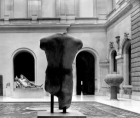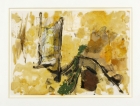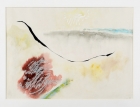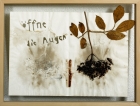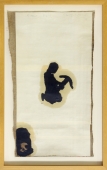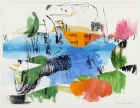
Artist | Jean-Christophe Ballot (*1960)
https://www.artist-info.com/artist/Jean-Christophe-Ballot
Biography
Biography
French photographer and motion picture director Jean-Christophe Ballot was born in Paris in 1960. An architecture graduate, he studied at the Ecole Nationale des Arts Decoratifs (Paris) as well as the FEMIS. Resident artist (photography) at the prestigious French Academy Rome (Villa Medicis), lives and works in Paris since 1981.
Jean-Christophe Ballot est né en 1960 à Paris. Photographe, cinéaste et architecte D.P.L.G., il est diplômé de l'Ecole Nationale Supérieure des Arts Décoratifs (communication photographique) ainsi que du F.E.M.I.S. Ancien pensionnaire de l'Académie de France à Rome (Villa Médicis), il vit et travaille à Paris.
About the work (italiano / français / english)
About the work (italiano / français / english)
Sabbioneta,citta ideale (Galleria del Leonae, Venezia - 15.06. - 17.07.2000)
Sabbioneta, un utopia realizzata, rappresenta per noi agli albori del secondo millenio, un modello, un motivo di domande oppure una referenza, un punto fermo nel tempo e nello spazio. Questa piccola citta ideale nell'Italia centrale e posta tra la Babilonia dell'Antico Testamento e le metropoli nate dalle visioni dei nostri urbanisti contemporanei.
Durante il Rinascimento, il Duca di Mantova, Vespasiano Gonzaga Colonna costruisce la citta di Sabbioneta nel 1558, con l'idea di creare una citta ideale partendo dalle idee umanistiche che sono il fulcro del pensiero rinascimentale. Nel 1577, la citta e completata e diventa sede del Ducato.
Le mura fortificate attorno alla cittš sono nella maggior parte intatte, il suo tessuto urbano e l'insieme dei suoi monumenti ne fanno un gioiello del manierismo italiano.
L'Italia ha numerosi oggetti archittetonici che rappresentano le idee del Rinascimento, e importante sapere pero che solo due citta saranno ideali a quell'epoca: Pienza in Toscana, il sogno del Papa umanista, Pio II che fu realizzato; e Sabbioneta nella Val Padana.
Fra i monumenti essenziali della citta, c'e il Palazzo Ducale, la chiesa dell'Incoronata , la Chiesa Santa Maria Assunta,il Palazzo Giardino e la sua Galleria ed infine il Teatro all'Antica.
Il teatro costruito tra il 1588 ed il1590 sul progetto di Vincenzo Scamozzi, e il primo esempio di edificio teatrale stabile e coperto realizzato specialmente a questo scopo e non ottenuto da costruzioni preesistenti. In questo senso e il primo teatro della Storia Europea.
Il lavoro fotografico studia i spazi interni ed esterni di questa citta ideale con varie linee di pensiero, in primis la memoria dei siti e la loro teatralita, due temi che avevo svilupato per Roma durante il mio soggiorno alla Villa Medici. Ci sono inoltre le domande poste dal trompe- L'oeil praticato nel cinquecento che trovano le risposte fotografiche che propongo. La scena del teatro e confrontata alla citta reale. Cosa c'e davanti e cosa c'e dietro? E verita o rappresentazione? La perdita dei punti fermi in certi spazi richiamati dalla fotografia e percio un riflesso ripetuto dei procedimenti pittorici ed architettonici manieristi con il dispositivo fotografico attuale.
Corpus/l'insieme delle immagini e stato realizzato su film negativo 4''x5''. Una quarantina d'immagini a colori tutte in doppio bianco e nero completate da una ventina di immagini solo in bianco e nero.
Sabbioneta, cite ideale (Galleria del Leonae, Venezia - 15.06. - 17.07.2000)
Sabbioneta, parce qu'elle est une utopie devenue realite, represente pour nous qui sommes a l'aube d'un nouveau millenaire, un modele, une source de questionnement, ou simplement une reference, un repere dans le temps et dans l'espace. Entre la Babylone de l'ancien Testament et les metropoles issues des visions de nos urbanistes contemporains, il y a donc cette petite cite ideale, plantee au coeur de l'Italie. Si ce pays compte de nombreux objets architecturaux mettant en oeuvre les idees de la Renaissance, il importe de savoir qu'elle ne donnera que deux cites ideales a cette epoque: Pienza en Toscane, le reve devenu realite d'un pape humaniste, Pie II; et Sabbioneta dans la plaine du Po. Le duc de Mantoue, Vespasien Gonzaga Colonna, fonde en 1558 la cite de Sabbioneta. C'est une tentative de creer la cite ideale a partir des idees humanistes qui animent la pensee de la Renaissance. En 1577, la cite est entierement construite et devient le siege du Duche. Les remparts encore pratiquement intactes qui entourent la ville, son implantation urbaine et l'ensemble de ses monuments font de la ville de Sabbioneta un bijou du manierisme italien. Le theatre, edifie entre 1588 et 1590 sur un projet de Vincenzo Scamozzi, constitue le premier exemple d'un edifice theatral stable et couvert, construit specialement pour cette fonction et qui n'a pas ete obtenu a partir d'edifices preexistants. En ce sens c'est donc le premier theatre de l'histoire moderne Europeenne.
Le travail photographique porte sur les espaces interieurs et exterieurs de cette cite ideale, avec plusieurs approches. Il y a d'abord la memoire des lieux et la theatralite, deux themes que j'avais developpe sur Rome lors de mon sejour a la Villa Medici. Il y a en suite un questionnement sur le trompe-l'oeil pratique au XVIe siecle a travers les reponses photographiques que je propose. Le decor de theatre est confronte a la ville reelle. Qu'est-ce qui est devant, derriere? Est-ce vrai ou est-ce une representation... La perte de reperes dans certains espaces evoques par la photographie est alors une mise en abime des procedes picturaux et architecturaux manieristes avec le dispositif photographique actuel.
L'ensemble des images est realise sur film negatif 4"x5". Une quarantaine d'images couleur, toutes doublees en noir et blanc est completee d'une vingtaine d'images seulement noir et blanc.
Jean-Christophe Ballot
Sabbioneta, ideal city (Galleria del Leonae, Venezia - 15.06. - 17.07.2000)
The city of Sabbioneta is a utopia come true. It could represents to our generation, at the beginning of a new millennium, a model, a source of questioning, a reference, or a guide-mark for time and space. Between Babylon of the Old Testament and the Megalopolis born from the visions of our contemporary architects, exists this small ideal city in the heart of Italy. Although Italy has many architectural objects which demonstrate the Renaissance spirit, it is important to note that during this period only two ideal cities were actually built: Pienza in Tuscany, which was humanist pope Pius II's dream come true, and Sabbioneta in the Po Valley. In 1558, during the Italian Renaissance, the duke of Mantua, Vespasiano Gonzaga Colonna, founded the city of Sabbioneta. It was an attempt to create the ideal city according to Humanist ideas which guided the spirit of the Renaissance. In 1577 the city was completed and became the center of the duchy.
The untouched ramparted walls which surround the town, the urban style of planning and the array of monuments make Sabbioneta a jewel of Italian mannerism. Amongst the most significant monuments of the town are the Palazzo Ducale, the Chiesa dell'Incoronata, the Chiesa di Santa Maria Assunta, the Palazzo Giardino with its Galleria and the Teatro Antico. This theatre built between 1588 and 1590 according to plans by the architect Vincenzo Scamozzi was the first ever immovable, roofed theatrical building. It was built only for its purpose and furthermore was not derived from other existing constructions. For that reason it is the oldest theatre of European history.
The photographic works demonstrate a variety of approaches in dealing with the internal and external spaces of this ideal city. The remains of the sites and their theatrical nature in Rome and Sabbioneta in the Po Valley are two themes I had already developed during my fellowship at the Villa Medici. The questioning that arise from the trompe l'oeil technique of the 16th century finds a photographic answers. The scene of the theatre is juxtaposed in the true city. What is in front of the stage and what is behind? Is it truth or representation? The lack of fixed points in certain spaces evoked by photography is then an infinitely repeated reflection of pictorial procedures and architectural mannerisms with the present photographic process.
Corpus/ the collection of images have been produced using negative film 4"x5". There are about forty images in colour, back-up in black and white and about twenty images made solely in black and white.
Jean-Christophe BALLOT
Solo Exhibitions (selection)
Solo Exhibitions (selection)
1988 Paris, l'Entrepôt, Berlin
1989 Paris, le Bateau-Lavoir, Niger
1990 Paris, Galerie des Beaux-Arts
1991 Paris, Espace Confluences
1992 Bologne, Baris, Aoste, Alliances Françaises, Sahel - Cappadoce
1993 Gennevilliers, Galerie Edouard Manet, Les Telluriques Tarbes, Galerie Le Parvis, Sahel - Cappadoce
1994 Paris, Passage de Retz; Rome Venise, Galleria del Leone; Le Louvre Merveilleux Florence, Bologne, Aoste, Gênes, Salerne, Palerme, Alliances Françaises Le Louvre Merveilleux
1995 Grèce, Bulgarie, Serbie, Roumanie, Croatie, divers sièges, Le Louvre Merveilleux
1996 La Roche-Guyon, Le Chateau, Sahel - Cappadoce Irlande, Pays-Bas, Norvège, Finlande, divers sièges : Le Louvre Merveilleux Los Angeles, San Francisco, Philadelphia, Atlanta, Houston, Washington, New Orleans, Alliances Françaises : Le Louvre Merveilleux
Group Exhibitions (selection)
Group Exhibitions (selection)
1987 Paris, Espace Photo, Prize Air France - Ville de Paris
1988 Israël, Mishkan Le'Omanut Museum of Art, Second Internationale Biennal de Photographie
1989 Paris, Musée d'Art Moderne, Palais de Tokyo, Moins Trente
1991 Rome, Villa Médicis, Rome Pays de Loire, DRAC
1992 Arles, Rencontres, European Kodak Panormana Paris, Caisse des Dépots et Consignations, Vers une attitude photographique Nantes, Artothèque, Acquisitions 92
1994 Paris, Musée d'Art Moderne, La Photographie contemporaine dans les collections de la Ville de Paris. Nouvelles acquisitions: un choix.
1995 Rome, Villa Médicis, Escale du Regard
1998 Miami '98, Gallery del Leone
Bibliography (selection)
Bibliography (selection)
1993 Le Grand Louvre, histoire d'un projet, édition du Moniteur, Paris
1994 Le Louvre en Métamorphose, textes de Michel Laclotte et Philippe Piguet, collection Diaclase, édition Créaphis, Paris
1995 L'Abbaye de Beauport, collection Littoral, édition Marval, Paris
1996 Bratislava, textes de Bernard Noël et Pascal Bonafoux, collection Capitales Oubliés, édition Edipso, Paris
Public Collections
Public Collections
Paris, Bibliothèque Nationale New York, Metropolitan Museum of Art Paris, Maison Européene de la Photographie Nantes, Artothèque Paris, Caisse des Dépots et Consignations Tarbes, Le Parvis Paris, Musée Carnavalet
Motion Pictures (as director)
Motion Pictures (as director)
1991 La Nuit Louradour, 35 mm, 26 minutes Anselmi : un Hotel de Ville, 35mm, 6 minutes
1992 Jean Henry, un collectionneur, 35mm, 13 minutes (Centre Nationale de la Photographie, PROCIREP, Mission Audiovisuelle du Ministère de la Culture)
1993 De Mémoire de Pierres, 35mm, 15 minutes (Coproduction Fondation Royaumont, Caisse Nationale des Monuments Historiques)
1994 Fragments, 16mm, 26 minutes ( on the curator Dietrich von Bothmer; production Artéfilm et les services audiovisuels du Louvre)
1995 Les Demeures d'Apollon, 16mm, 6 minutes (Artéfilm et les services audiovisuels du Louvre)
1996 Pisanello vu par Jean Giono, super 16, 26 minutes (Coproduction Les films d'Ici, Paris Première the Louvre)
1997 Pajou, sculpteur du Roi, Beta 16, 26 minutes (Coproduction Les films d'Ici, Paris Première, the Louvre)
1997 En suivant l'étoile, carnet de route - on the pilgrimage to Santiago of Compostella, 35mm. B/W , 26 minutes (production Injam)
Academic career
Academic career
1989 Professor at the Ecole des Beaux-Arts, Rueil-Malmaison
1993 Member of the Jury, l'Ecole des Beaux-Arts, Nantes
1991-92 Professor of photography at the Société Française d'Architecture depuis
1993 Professor of photography at the Ecole Camondo
1995 Workshop at the PNF (Centre National de la Photographie)
 offers / Requests offers / Requests  |
Learn more about this service |
|---|
 Exhibition Announcements Exhibition Announcements  |
About this service |
|---|
 Visualization |
Learn more about this service | ||
|---|---|---|---|

Interested in discovering more of this artist's networks?
3 easy steps: Register, buy a package for a visualization, select the artist.
See examples how visualization looks like for an artist, a curator, or an exhibition place: Gallery, museum, non-profit place, or collector.

Exhibition History

|
SUMMARY based on artist-info records. More details and Visualizing Art Networks on demand. Venue types: Gallery / Museum / Non-Profit / Collector |
||||||
| Exhibitions in artist-info | 3 (S 3/ G 0) |
Shown Artists - 0 of 0 artists (no. of shows) - all shows - Top 100 |
||||
| Exhibitions by type | 3: 2 / 0 / 1 / 0 | |||||
| Venues by type | 2: 1 / 0 / 1 / 0 | |||||
| Curators | 0 | |||||
| artist-info records | Dec 1994 - Mar 2008 | |||||
|
Countries - Top 2 of 2 Italy (2) France (1) |
Cities 2 - Top of 2 Ivry-sur-Seine (2) Paris (1) |
Venues (no. of shows )
Top 2 of 2
|
||||
|
Curators (no. of shows)
Top 0 of 0 |
| Maison Européenne de la Photographie - MEP | S | Jan 2008 - Mar 2008 | Paris | (223) | +0 | |
| Galleria del Leone | S | Jun 2000 - Jul 2000 | Ivry-sur-Seine | (26) | +0 | |
| Galleria del Leone | S | Dec 1994 - Jan 1995 | Ivry-sur-Seine | (26) | +0 | |
| Keep reading |













